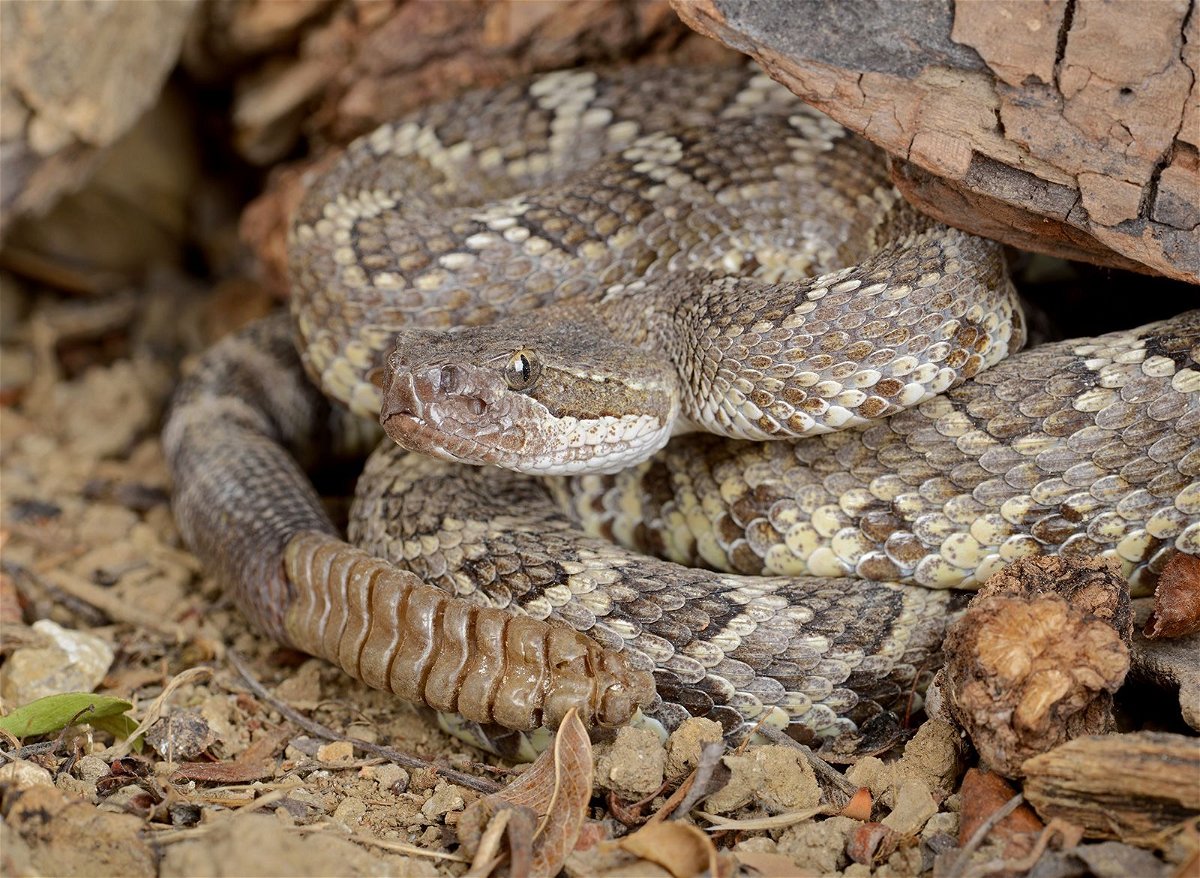New study reveals what can calm snakes in times of stress — and it’s surprisingly relatable

The new study looking at Southern Pacific rattlesnakes could provide a starting point for additional research into the reptiles’ sociality.
By Jackie Wattles, CNN
(CNN) — Snakes: They’re just like us — at least in one respect.
Like humans, the slithery reptiles may rely on others of their kind to stay calm in times of stress, according to a new study published Thursday in the journal Frontiers in Ethology.
The study authors focused their research on Southern Pacific rattlesnakes, or Crotalus helleri, which are common in Southern California. They found the snakes that went through stressful situations in the presence of a companion exhibited reduced heart rates compared with those that endured the stress alone.
These findings marked the first time that social buffering — a phenomenon in which having companions around can reduce biological responses to stress — has been recorded in reptiles, according to lead study author Chelsea Martin, a doctoral student at Loma Linda University in California. It has been observed previously in humans, rodents, birds and nonhuman primates.
“Snakes and reptiles are really interesting because I think they’re often overlooked in their behavior,” Martin said. “People are often really afraid of snakes … (but) they’re not so different from us. They have moms that take care of their children. They’re able to reduce their stress when they’re together. That’s something that we as humans do, too.”
How to study snake stress
Martin worked with Dr. William Hayes, an earth and biological sciences professor at Loma Linda, to design the study.
It was Hayes’ idea to explore the snakes’ stress response, Martin said.
The research team removes rattlesnakes for people who don’t want them near their homes, she said, so Hayes spends significant time driving around with buckets of the reptiles in his car.
“He had noticed that when he had two snakes in a bucket together as he was driving down the mountain that they seem to rattle less or not rattle at all — as opposed to if he just had one snake in the bucket,” she said. Rattlesnakes tend to shake their tail, emitting their signature warning sound, when threatened.
Another colleague suggested this behavior could be a sign that the snakes were engaging in social buffering, and their team designed an experiment for the rattlesnakes.
They used 25 Southern Pacific rattlesnakes captured from the wild, including some that came from lowland areas and others from the mountains. (Pacific rattlesnakes that live in the mountains are known to overwinter together, or spend the cold months in one another’s company, while lowland snakes do not.)
The researchers placed the snakes in 19-liter plastic buckets, then sealed off and struck the containers with pipes to simulate a stressful environment. They used an over-the-counter heart rate monitor to track the animals’ stress levels while testing the subjects in three ways: alone, with a companion, and with a rope about the same size as a fellow snake (to ensure that the presence of another snake, and not just another object, was causing the reduced stress response).
They found that the snakes’ heart rates were substantially reduced when they were placed in the bucket with a companion compared with being alone or with the rope. And that result held true for both the lowland and mountain-dwelling snakes as well as males and females.
What’s next for snake research
These findings could have broad implications not only for Pacific rattlesnakes but also for reptiles in general, according to the study authors.
Martin and Hayes said similar social buffering behavior could exist across numerous snake species as well as in lizards, crocodiles and other scaled creatures.
“Nobody’s really looked at (social buffering) in reptiles,” Hayes added.
Dr. Erika Nowak, a herpetologist and assistant research professor at Northern Arizona University’s Center for Adaptable Western Landscapes, agreed that research into snakes’ social behaviors had been limited until recently. She was not involved in the new study.
“I’m so pleased to see a well-conceived study that adds to our understanding of sociality in rattlesnakes,” Nowak said via email. “Their sociality is only ‘cryptic’ because we scientists haven’t assumed that they (are) fully social animals, and thus we haven’t always carefully looked for behaviors that support sociality.”
This evidence of snakes engaging in social buffering aligns with other social behavior she’s observed in her own research, Nowak added.
“I’ve observed two wild male western diamond-backed rattlesnakes who hibernated near each other, traveled together during the active season, and even defended each other from me,” she said.
This study could provide a starting point for additional research into snakes’ sociality. Nowak said she would like to see studies on how social buffering could affect snakes’ levels of cortisol, otherwise known as the stress hormone. And studies such as this one could inform how snakes’ caretakers treat the animals in captivity.
“(T)his (and other) research clearly shows that snakes could benefit from having cagemates,” Nowak said.
Researchers also said they hope this study will have a positive impact on the public’s perception of snakes. They know most people aren’t wild about the reptiles — especially the venomous variety.
“Please don’t hype these as dangerous animals. Obviously, they are. But they’re only trying to protect themselves,” Hayes said. “They’re frightened of us. They’re reclusive animals. … So we would really appreciate a more positive emphasis on snakes.”
The-CNN-Wire
™ & © 2023 Cable News Network, Inc., a Warner Bros. Discovery Company. All rights reserved.
